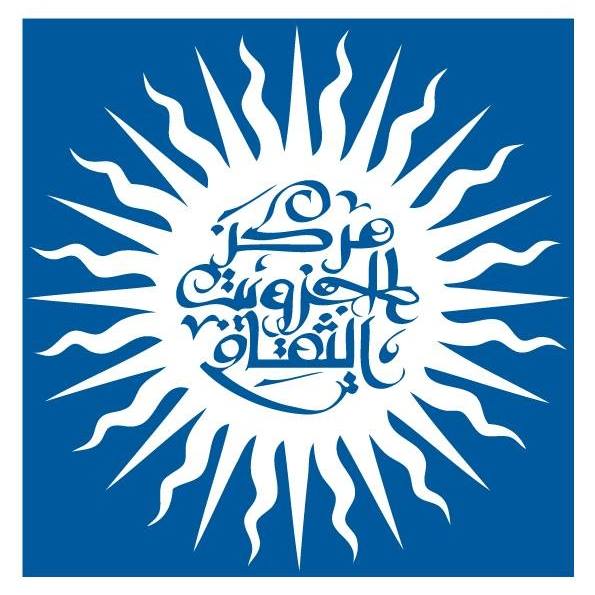Sixth Season of Iskandrona Exhibition
Sixth Season (2023): Documentation of Transport Lines and Stations in Alexandria
The sixth season of the Iskandrona Exhibition explores the theme of transport lines and stations in Alexandria. This theme is particularly relevant as Alexandria was Egypt’s first transport innovation station, and its transportation networks have played an important role in the city’s development for thousands of years.
Karmouz Production Workshops
Ahmed Abd Elwahab
When the city tram was built in Alexandria in 1896, this place was built at Karmouz final tram station as sheds and workshops to support the tram. The oldest map in which the place is described in 1906/1907 as “The Alexandria Wabour Tramway”, After constructing other sheds for trams in nearby places; The place was limited to maintaining the tram, Now the place is workshops where spare parts for all public transportation vehicles in Alexandria are repaired and manufactured.
There are sections for metal casting, woodturning, blacksmithing, carpentry, and others. The method of metal casting is almost manual.
The place is dominated by three buildings, the first on the right is a truss building with a wooden facade and roof, next to it is a larger building that brick facade, and followed by a huge concrete building that used to electricity generators and is now on the verge of collapse.











The Present From The Past
Ahmed Khamis
The Alexandria tram is considered one of the oldest means of public transportation in Egypt and Africa. The tram began operating in 1860 and was initially pulled by horse, then by steam. From 1902 until now, it is moved by electricity. The tram was built to connect the city center, which is the sand station to the east of the city in Victoria, and the small yellow tram was made. To move between the popular neighborhoods which will be the yellow one as it is the modern one currently.
Tram is like a sea
Ahmed Mostafa
Can anyone and specifically the “citizen of Alexandria” lives without trams? The citizen of Alexandria cannot imagine even because the tram is the lifeline of the city of Alexandria, it cannot be dispensed with in one way or another because it is a living heritage.
Tram is Egypt’s cheapest and mode of transportation. On the other hand, the problem of tram is delayed on passengers due to traffic signals and car congestion. Moreover, there are no fixed dates for movement and arrival.
Eventually, we can say that the Tarmai is a unique vital material heritage and has become the only one in Egypt after

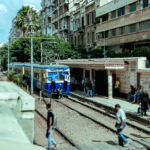










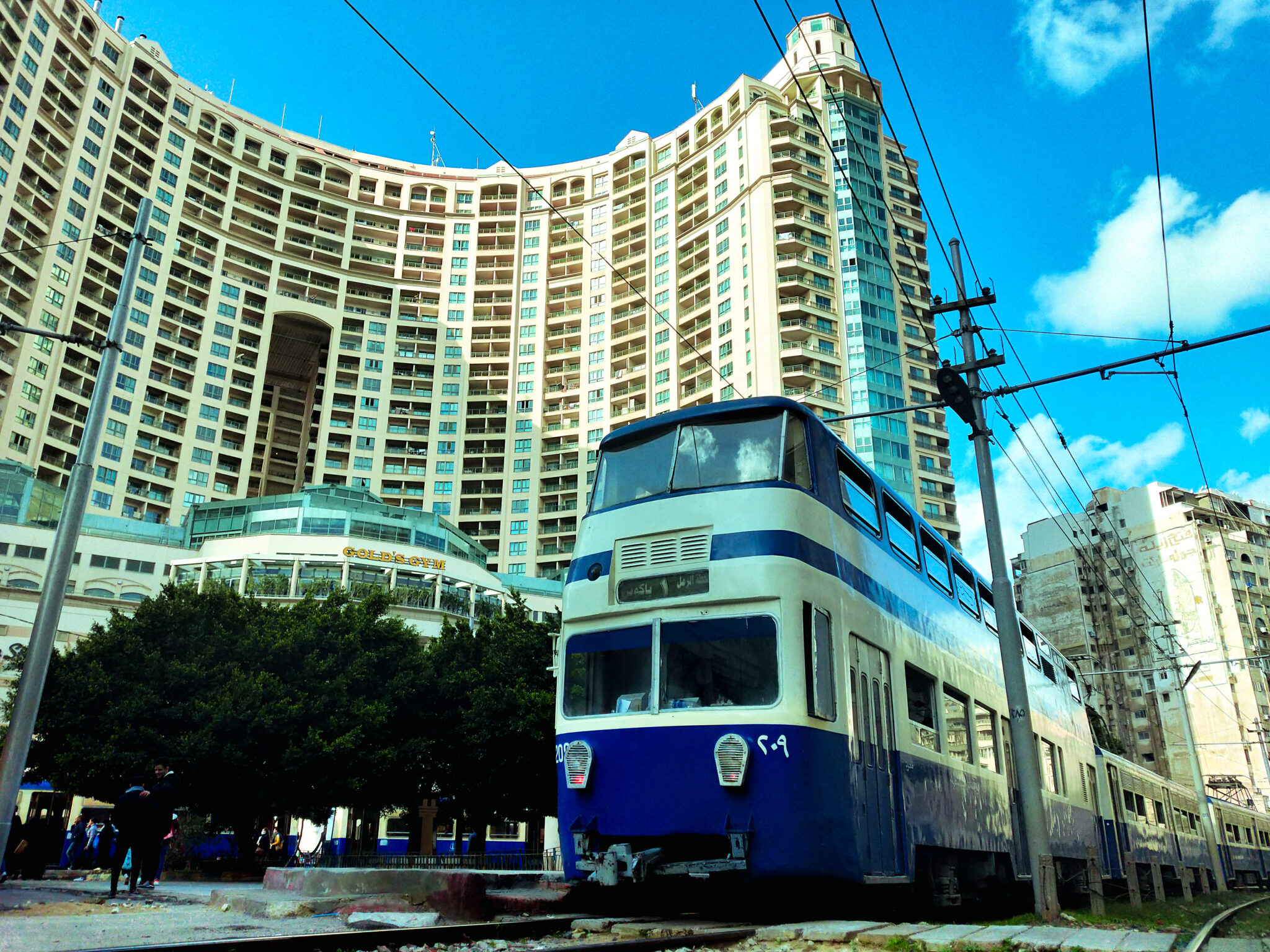













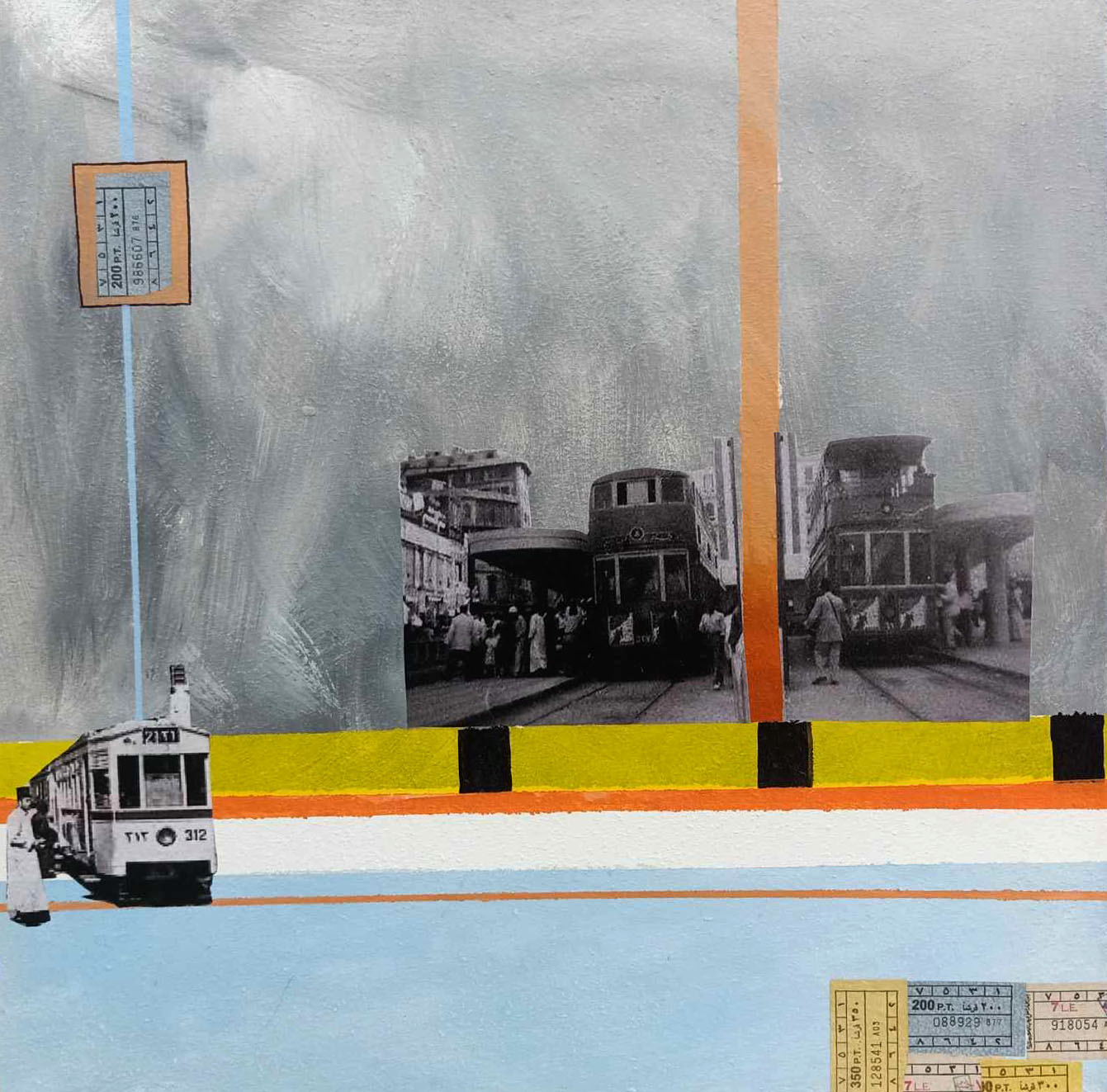
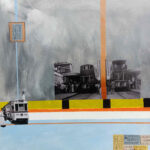
Arrival, Departure
Ahmed Osman
I’m here… the city is an unfinished painting… shaped in the past and the present… I’m monitoring what is left… observing the scene, engaging me in a conversation… very long ones about nostalgia, hope and fear… I’m trapped by the ghosts of drowning… I’m here like “Raml Station” … arrival, departure.
Work size: one piece (50*120 cm) two pieces (50*50) Materials used: mixed media (collage – acrylic – photography – ink) on canvas
A tour of Alexandria with stagecoach bells
Anan assem
This art piece captures the essence of Alexandria’s heritage, depicting a serene street where a wooden carriage’s chimes gracefully echo. Guided by a skilled driver, the carriage breathes life into a majestic horse, gliding effortlessly through ancient streets and alleyways, exuding.


The Trip
Aya Kamaly
Alexandria left a charming and magnificent memories in every Egyptian’s soul, memories full of richness, sublimeness. The historical diversity puts Alexandria in an individual page of a trip.
A trip with the Tram in the details of Alexandrian’s world.
Yellow Tram in Alexandria
Dina Elhilaly
The Art work is about the heritage of the (Yellow Tram) in Alexandria. A Belgian company was established to operate it in 1897, under the name “Alexandria Tramway Company.” Then the electric tram appeared, and the shape of the ‘Yellow Tram’ is currently present in Montazah.
The photo was taken on October 15, 2023. Raindrops appear in the image of aesthetic scenes. The landscape appears beautiful when photographed after the rain stops, especially the green spaces. There is the shine of the sky on the ground due to the rain with the beauty of palm trees and dates. The beauty of the colors increases in the photo. Clear air makes the picture clearer.
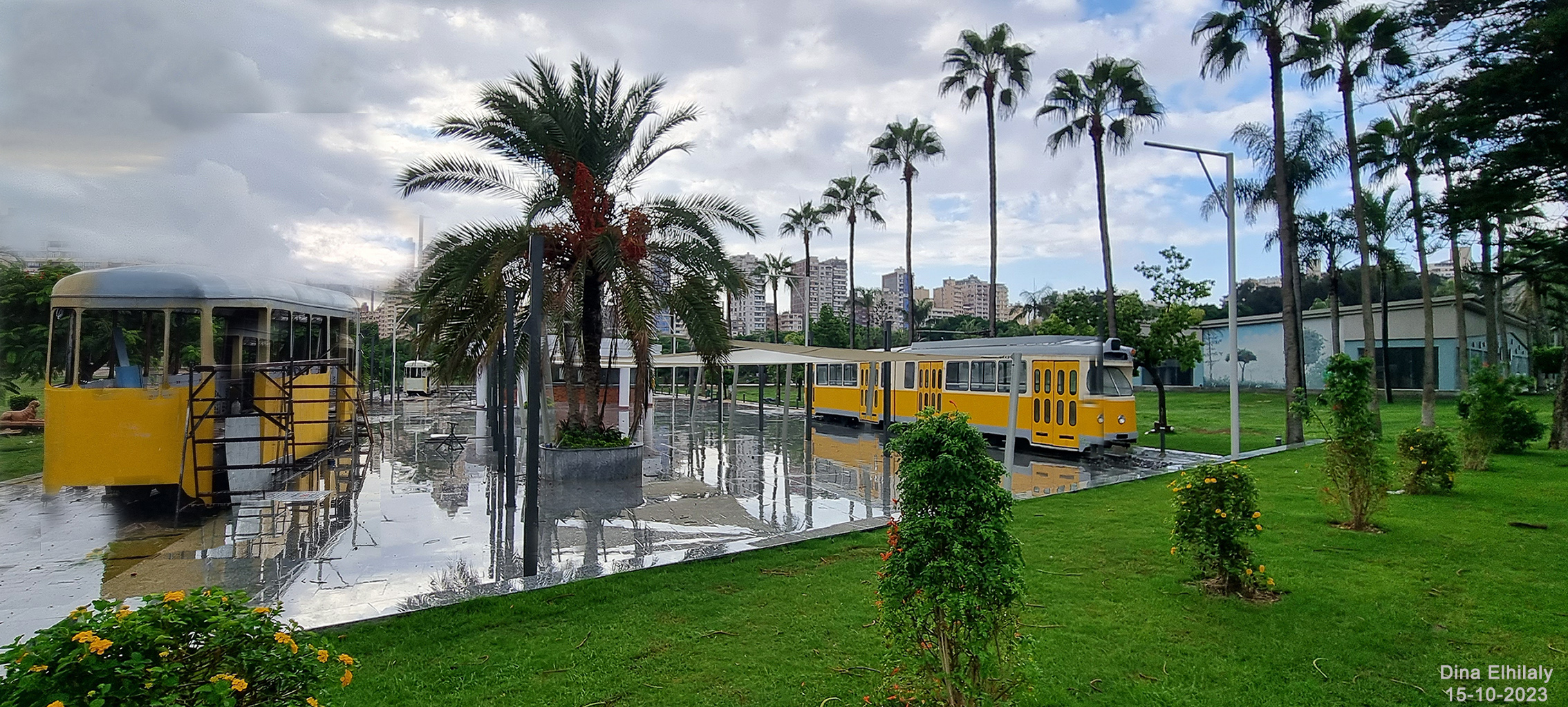

Tramscendence ‘’ What’s Beyond the Tracks’’
Habiba Mohamed Rashad
“Step into a realm where time intertwines with memories, where the echoes of the past resonate through the present. ‘
Tramscendence: What’s Beyond the Tracks’ invites you on a captivating journey through the intangible essence of Alexandria’s tram. As you gaze upon these photographs, you’ll be transported to a bygone era, where the tram served as a lifeline, connecting communities and weaving stories along its tracks.
Beyond the physical infrastructure, the tram holds a treasury of intangible treasures. It carries the whispers of conversations, the laughter of children, and the dreams of generations. Its rickety wheels evoke nostalgia, while its familiar chimes awaken forgotten emotions. Through these images, we delve into the intangible aspects of the tram – the collective memories etched in its metal framework, the intangible threads that bind communities together, and the intrepid spirit that endures through the passage of time.
Tram 601 - YellowxBlack
Hamsa Hefny
Tram 601
The Belgian Tram 601, manufactured in 1931 in front of building “No. 1”, known as Little Venice or Miramar (left), designed by the Italian-Egyptian architect “Giacomo Alessandro Loria” in 1926 and building “No. 2” known as Heikal’s Building (right), designed by the architect “Ricardo Smith” in 1929. Two of the oldest buildings in the Ramel area in Alexandria. The red tram was restored and revived in 2020 after decades of absence.
YellowxBlack
On the historical Fouad Street, the famous Alexandrian taxi meets with “Au Pavillon de FLORELLE”, i.e., the “house of flowers” in French, the oldest flower shop in Alexandria, aging more than 100 years.


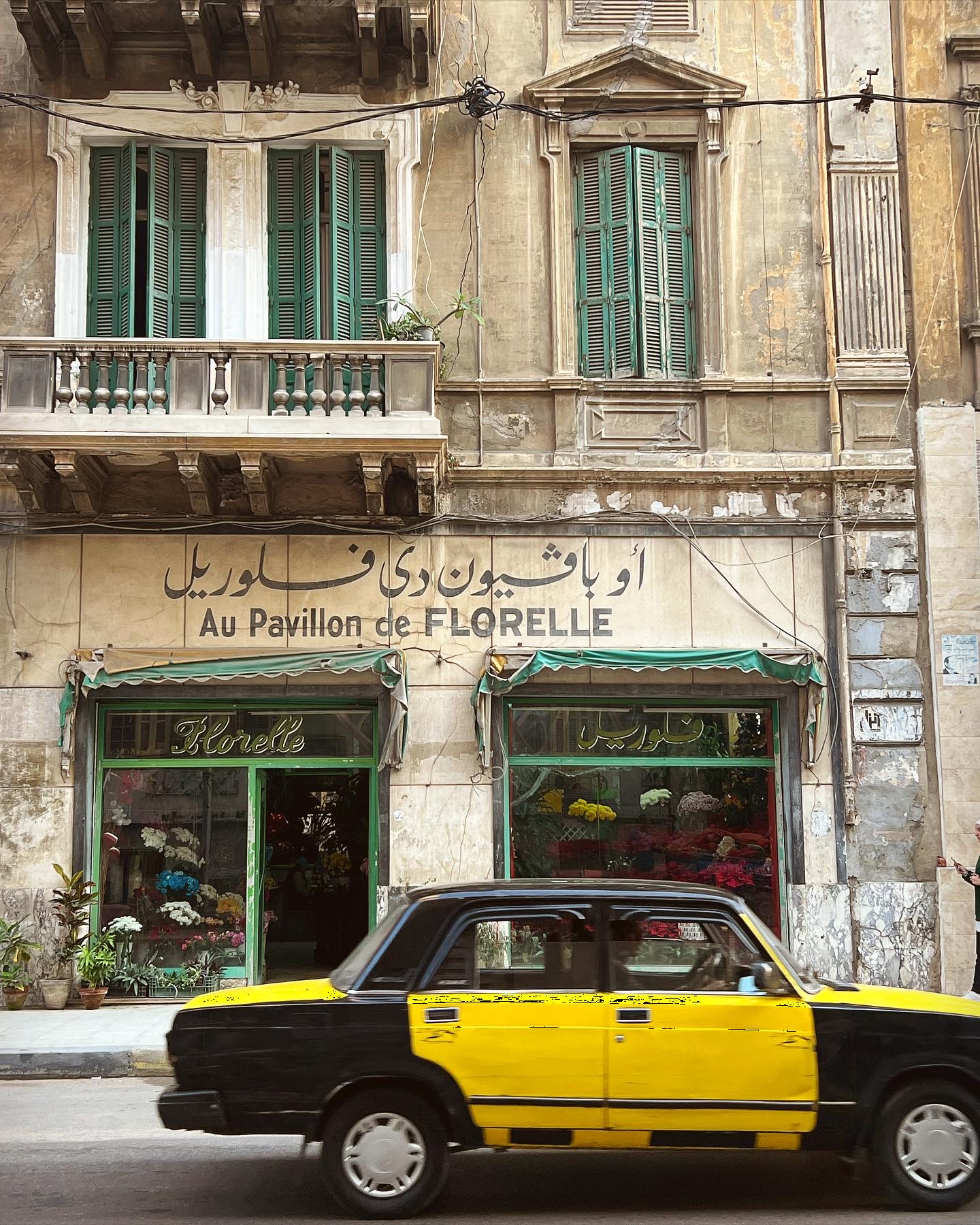



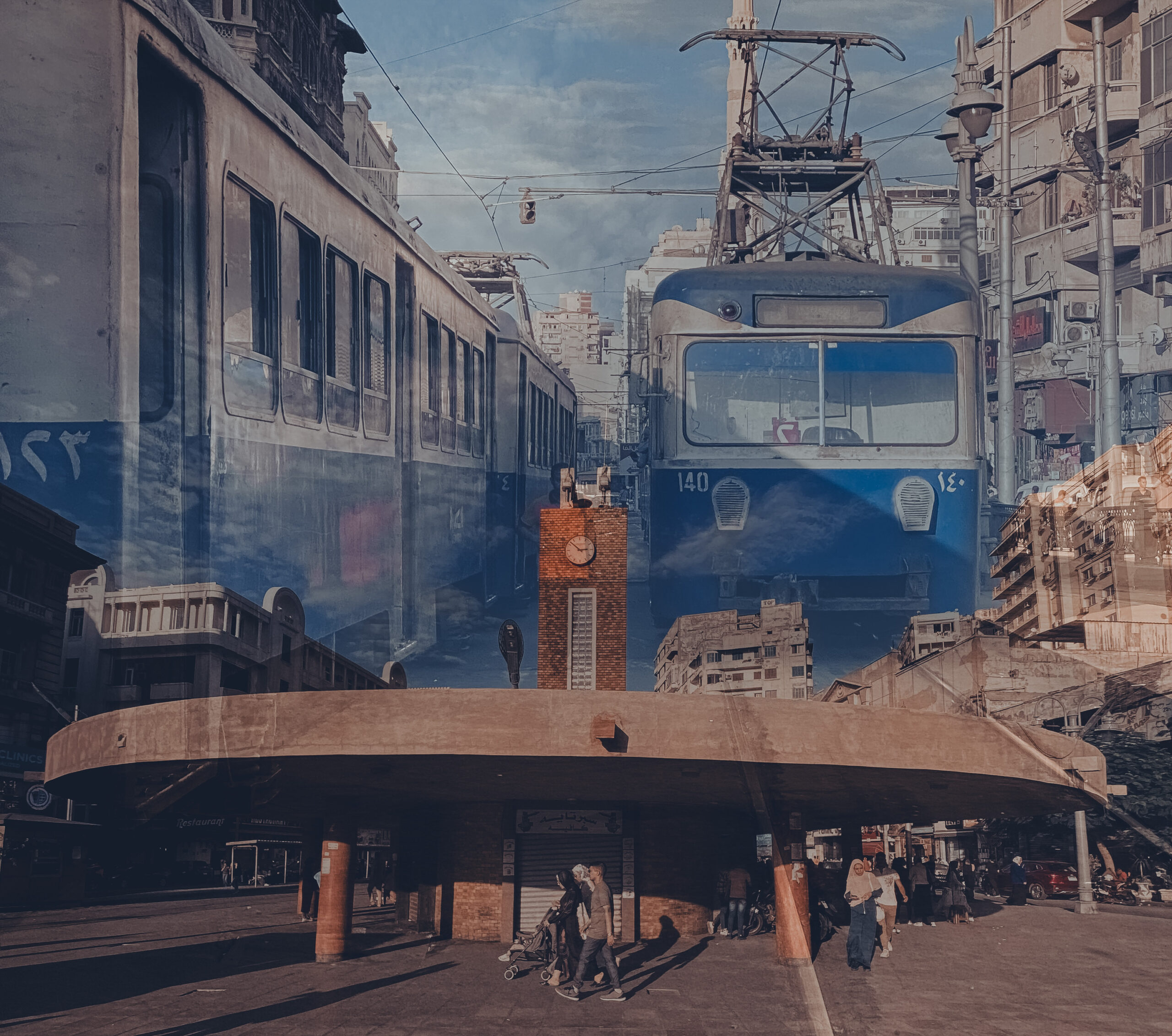

Double vision “El Raml station”
Heba Allah Mostafa Zeinelabdin Mohamed
Each image consists of two scenes taken at El Raml station, from daily scenes we see whenever we pass by this place – which is considered the oldest transportation hub in Egypt and Africa, and an iconic place of Alexandria -, and then these scenes were combined to create compositions with a different point of view that symbolize the place and convey a different feeling as a result of the double visions.
Raml Tram Station
Hovsep Ohanian
Alexandria Tram is considered the first public transportation service to be established in Egypt and Africa.
During the reign of Muhammed Saeed Pasha, in 1860, the government established the first tramway line. First railway tracks were laid in the Cleopatra Oblisk area (current Raml Station which used to be a sand dune area).
January 8 1863 marks the first tram trip from Raml Station to Bolkly Station through Sidi Gaber Mosque. It was drawn by 4 horses and consisted of 4 wagons, a first class, two second class and a third class.
When Khedive Ismail came to power in December 1863, he paid more attention to the Raml area. On June 22 1863 the Raml Tram was converted to be steam powered and finally to be electrically powered in the early 1900s.


From The Heart of Alexandria
Engy Diaa Eldin Mohamed
The work is based on the concept of communication between people and places, in addition to being closely linked to the city of Alexandria and its geographical and demographic character as it is a cosmopolitan city, founded to embrace many cultures, knowledge, ideas and customs.
Here, the tram becomes not just a means of transportation, but rather a symbol of the concept of communication between regions, neighborhoods, and community ideas. The distinctive yellow color means of transportation in Alexandria was chosen to give warmth to the work, embodying the nature of the strong coastal sun. while in the background extend areas and minute parts of shades of blue, violet, and gray that complement the warm colors, emphasizes the character of the city with all its contrasts.
Alexandria Train Station
Islam Frghaly
Alexandria Train Station, or as the people of Alexandria are accustomed to calling it Misr Station… The second oldest train station in the world is located in Martyrs’ Square and has been in existence in this current design since 1927.
It is considered an important and basic center of transportation in Alexandria… if it connects the city of Alexandria with Cairo, the regions, and Upper Egypt, in addition, of course, by connecting western Alexandria to its east through the Abu Qir train and the suburbs between them.
The Abu Qir train is one of the fastest and most important transportation services in Alexandria, and it has contributed greatly to the rapid growth of the city socially and culturally as well.
The station has appeared in many films, as well as the main station, Sidi Gaber station.





Walk on The Corniche
Marwa Elshazly
The work is based on the concept of communication between people and places, in addition to being closely linked to the city of Alexandria and its geographical and demographic character as it is a cosmopolitan city, founded to embrace many cultures, knowledge, ideas and customs.
Here, the tram becomes not just a means of transportation, but rather a symbol of the concept of communication between regions, neighborhoods, and community ideas. The distinctive yellow color means of transportation in Alexandria was chosen to give warmth to the work, embodying the nature of the strong coastal sun. while in the background extend areas and minute parts of shades of blue, violet, and gray that complement the warm colors, emphasizes the character of the city with all its contrasts.
Transportation Carries Stories
Riham Mohamed Elsayed
Alexandria has a rich history of public transportation systems and even though our destinations may be similar, each transportation carries different passengers with different stories that if you look closely, you’ll find something to entertain you throughout your journey.
Taxis in Alexandria goes back to 1905 when it was imported from France, running on batteries instead of fuel. In 1919 Alexandria had 30 taxis. In 1985 the official colors for taxis were adopted, yellow and black, and were equipped with a meter to calculate the fare.
Raml tram in Alexandia goes back to 1860 when a concession was granted to establish a railway line between Alexandria and Raml. The first line ran from Ramses Station to Raml Station operated with horse-drawn carriages. In 1882, they were replaced by steam-powered carriages.in 1902 it was powered by electricity.
















The Ancient Heritage of Alexandria
Rowan Saied
I am here to be your eyes inside this ancient civilization in its simplest form. I hope that my feelings will reach you through these images that carry ancient memories. And because civilization and memories do not die, I chose to be the one who shows you that civilization and takes you back to those memories. As it is said that smells are not forgotten; also memories are not forgotten, streets are not forgotten. And here I am, showing you a mixture of those feelings, mixed with those memories that only a little remains of them. And I regret to say a little, and they carry thousands of meanings and feelings inside me.
I hope that my feelings reach you through these pictures that carry old memories.
MAHATET ROKAB ALEX
Samaa Zain ElAbdeen Abd Elrahman
Every day, people get on and off the station before it’s even their turn. Most of the microbuses, or Mashrou’ as we like to call them in Alexandria, leave before you can even turn around and enter the station. It’s a mess, but it’s organized chaos. Each driver knows their place and their role, and woe betide anyone who takes someone else’s spot. It’s a big and complex system, and I don’t know how they choose who gets to go in first, but it’s not random. If you’re accompanying someone, don’t worry about getting home!

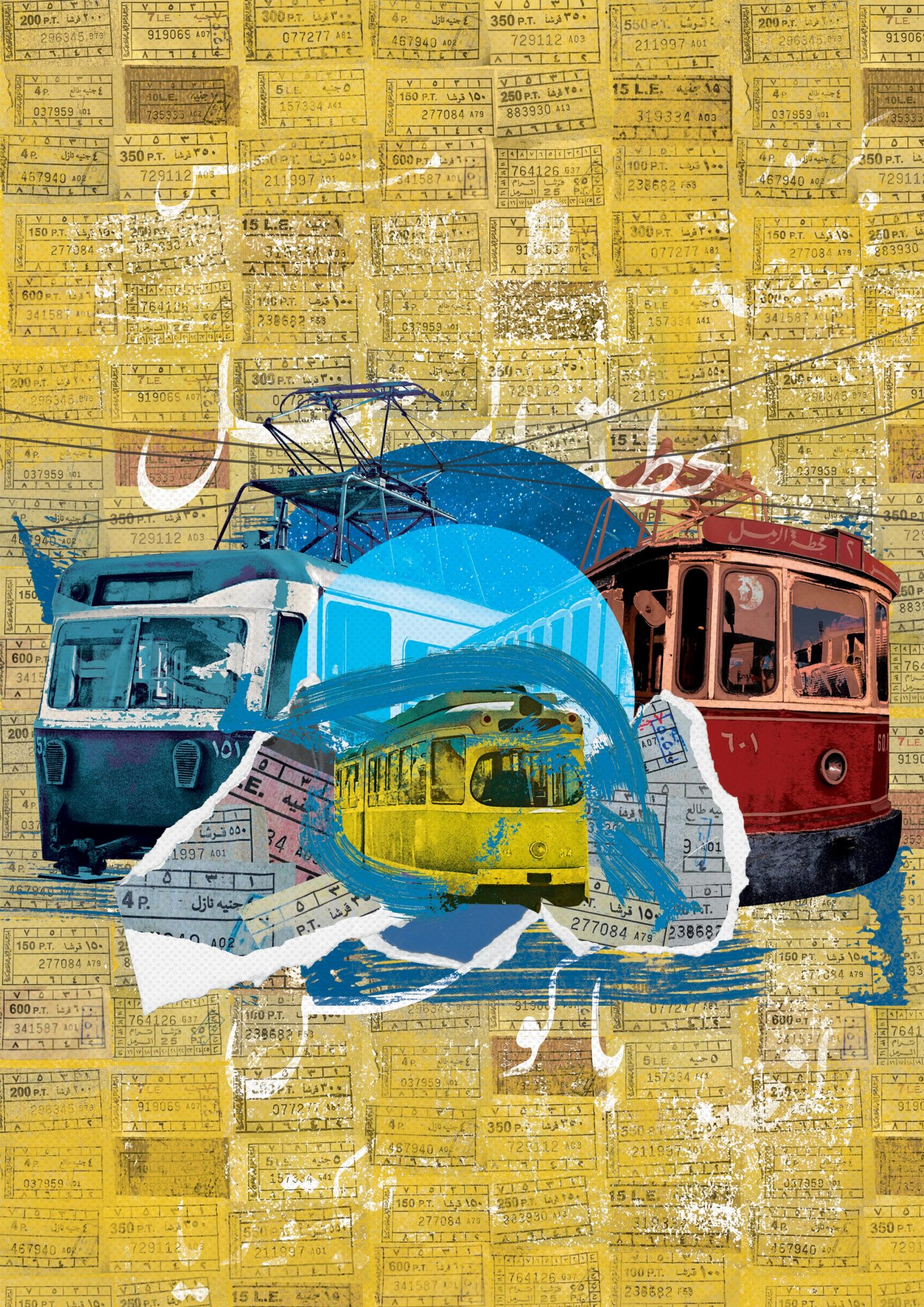
Pantograph
Sara Hassan
Between old and current lines, a tram ticket can either represent a transportation document or a special souvenir. Thanks to Alexandria’s long extensive history of Tram lines and categories, each ticket you get could surprise you with a new label.
This is a digital collage based on multiple photographs which illustrate the different designs of Al Raml Tram and the city tram as well as digitally created textures and elements. One of the main elements used is a collection of various tram tickets which represent current and previous tramcars, distances, and special tickets (meant for elderly people and army soldiers).
Between Heritage & Culture
Shorouq Sabry
Heritage always represents nation’s identity over time as it tells everything about people’s history in a way that makes the recipient tend to feel the actual history but with an addition of a trait that distinguishes each specific time. Noticing that heritage is a reason for past-to-present transformation. Here, as shown in the photograph, the Blue/Raml Tram -with its current appearance which lasted for years- exhibits to the observer different time tales, moving the observer to a new phase; Modern/Ukranian Tram which goes along the same path as the Blue Tram. Both merging to perform time contradiction followed by a new form as shown in doors, windows, tickets, speed & even the overall form causing a chance for cultural and community diversity. Yet, how would you expect for both phases to cause change in near future after they become heritage?

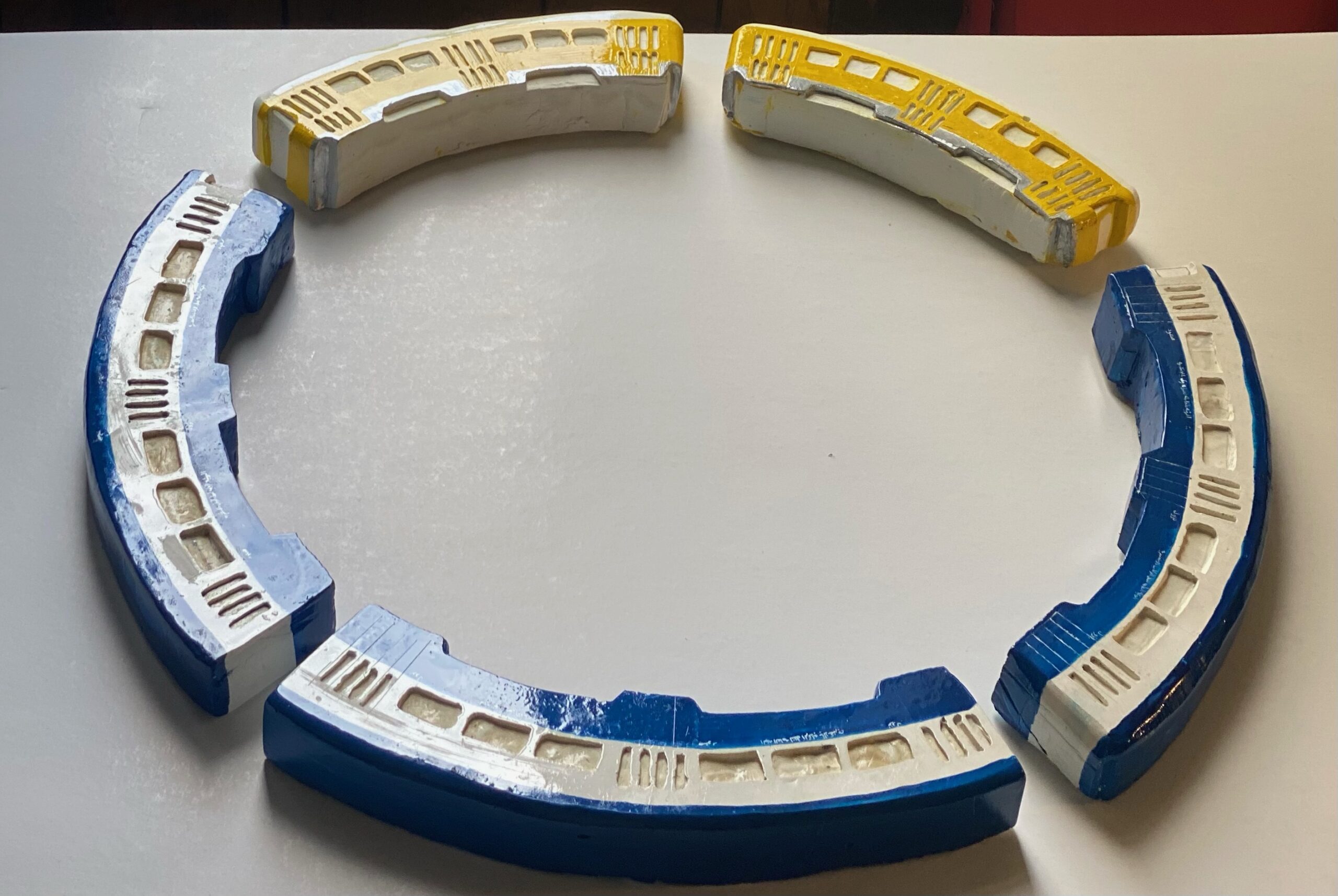



Circular Connections: Miniature Heritage of Alexandria's Transportation System.
Yara Hesham
Through the medium of miniature art, I captured the essence of our city’s old and beautiful transportation system, allowing viewers to reminisce and appreciate the charm of one of the symbols of Alexandria.
The centerpiece of the sculpture is a circular arrangement of trams. The blue tram connects the route from Victoria to El Raml station, while the yellow tram connects the path from Bahari to Maharam Bek and further. Both trams start from and meet at the Raml station, and serve the city center as well as the western areas.
By creating this sculpture, my intention is to recall a sense of nostalgia and pride in our city’s transportation heritage. Through the details, I hope to take the audiences back in time and allow them to witness and appreciate the beauty of Alexandria’s transportation system.
In Collaboration with
